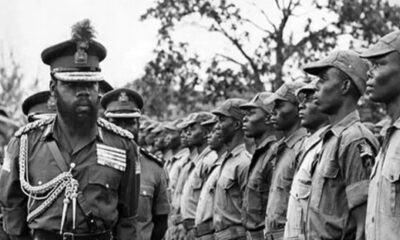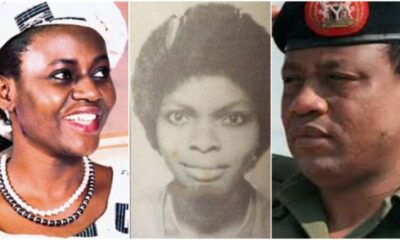Strokes are among the most life-altering medical events one can experience, and their effects can be as varied as the individuals who endure them. While the medical community has made significant strides in understanding and treating strokes, the personal impact of a stroke remains deeply unique and unpredictable.
For families, the aftermath of a stroke can be a whirlwind of emotions, challenges, and adjustments. This article explores the five ways a stroke can affect everyone differently, shedding light on the profound and varied experiences that follow such a critical health event…Click Here To Continue Reading>> …Click Here To Continue Reading>>
1. Physical impact
The physical effects of a stroke can range from mild to severe, and no two people will experience the same physical symptoms. For some, a stroke might result in slight weakness in a limb, while others might face complete paralysis on one side of the body. These differences stem from the area of the brain affected by the stroke and the extent of the damage.
For instance, a stroke in the left hemisphere of the brain might cause difficulties with speech and language (aphasia), while a stroke in the right hemisphere could lead to problems with spatial awareness and attention. The variability in physical outcomes means that recovery is also highly individualized, with some people regaining full function and others needing long-term rehabilitation.
The physical aftermath of a stroke can be daunting, but it’s important to remember that every small step toward recovery is a victory. Each person’s journey will be different, and while some may quickly regain their strength and mobility, others might find themselves navigating a new normal.
2. Cognitive changes
Cognitive changes after a stroke can be just as diverse as physical symptoms. Some individuals may experience memory loss, difficulty concentrating, or challenges with problem-solving, while others may find that their cognitive abilities remain largely intact. The extent of cognitive changes depends on the location and severity of the stroke, but these changes can be subtle and may not be immediately apparent.
For example, someone might struggle with complex tasks that they once found easy, such as balancing a checkbook or following a recipe. Others may notice changes in their ability to process information quickly or to make decisions confidently. These cognitive shifts can be frustrating for stroke survivors and their families, as they may affect the individual’s ability to live independently or return to work.
It’s crucial for loved ones to offer patience and understanding during this time, as the person who has had a stroke adjusts to these new challenges. Cognitive rehabilitation and therapy can provide support, helping individuals regain some of their lost abilities or learn new ways to manage daily tasks. READ FULL STORY HERE>>>CLICK HERE TO CONTINUE READING>>>
3. Emotional responses
The emotional toll of a stroke is profound, and the emotional responses can vary widely from one person to another. Depression, anxiety, and mood swings are common after a stroke, but some individuals might also experience feelings of anger, frustration, or hopelessness. The emotional impact of a stroke can be as debilitating as the physical and cognitive effects, making it a critical aspect of recovery.
One person might feel a deep sense of loss or grief over their changed abilities, while another might struggle with anger and irritability. These emotional responses are often linked to the brain’s areas affected by the stroke, but they can also be influenced by the individual’s personality, support system, and coping mechanisms.
Family members and caregivers need to recognize these emotional changes and provide a supportive environment where the stroke survivor can express their feelings without judgment. Counseling or therapy can also be beneficial, helping the individual and their loved ones navigate these complex emotions and build resilience.
4. Social impacts
A stroke can significantly alter the social dynamics within a family or community. The individual who has had a stroke might find that their relationships with loved ones change as they navigate their new reality. For some, the changes might be minor, while for others, the stroke could lead to a complete shift in family roles and responsibilities.
For example, a spouse who was once the primary breadwinner may now require care, leading the other partner to take on new roles both inside and outside the home. Children might have to step up to assist with daily tasks or make decisions that were previously the responsibility of their parents. These shifts can create stress and strain within families, as everyone adjusts to the new dynamics.
Social isolation is another potential consequence, as the individual may feel embarrassed or self-conscious about their abilities. It’s important for families to encourage social interaction and to seek out support groups where they can connect with others who understand their experiences. Maintaining a social network is crucial for emotional well-being and can play a significant role in the recovery process.
5. Recovery journey
The road to recovery after a stroke is not a straight line, and it looks different for everyone. While some may experience rapid improvements, others might face a slower and more challenging path. Recovery can be influenced by factors such as age, overall health, the severity of the stroke, and the quality of medical care received.
For some, recovery might involve relearning basic skills, such as walking or speaking, through intensive rehabilitation. Others might focus on adapting to their new limitations, finding ways to live independently despite their challenges. It’s important to celebrate progress, no matter how small, and to remain hopeful, as many stroke survivors continue to make improvements months or even years after the event.
Support from family, friends, and health care professionals is essential in this journey. Rehabilitation programs, physical therapy, and occupational therapy can all play a vital role in helping individuals regain their independence and improve their quality of life. The key is to remain patient and persistent, understanding that recovery is a deeply personal process that cannot be rushed.
Conclusion
A stroke is a life-changing event, but its impact is anything but uniform. Each person’s experience with a stroke is shaped by a combination of physical, cognitive, emotional, and social factors, making every journey unique. As we’ve explored, the ways a stroke affects everyone differently highlight the need for personalized care and support. For families, caregivers, and health care providers, understanding these differences is crucial in helping stroke survivors reclaim their lives and find hope in the recovery process. By acknowledging the individuality of each experience, we can better support those on the path to healing, fostering resilience and strength in the face of adversity.


















